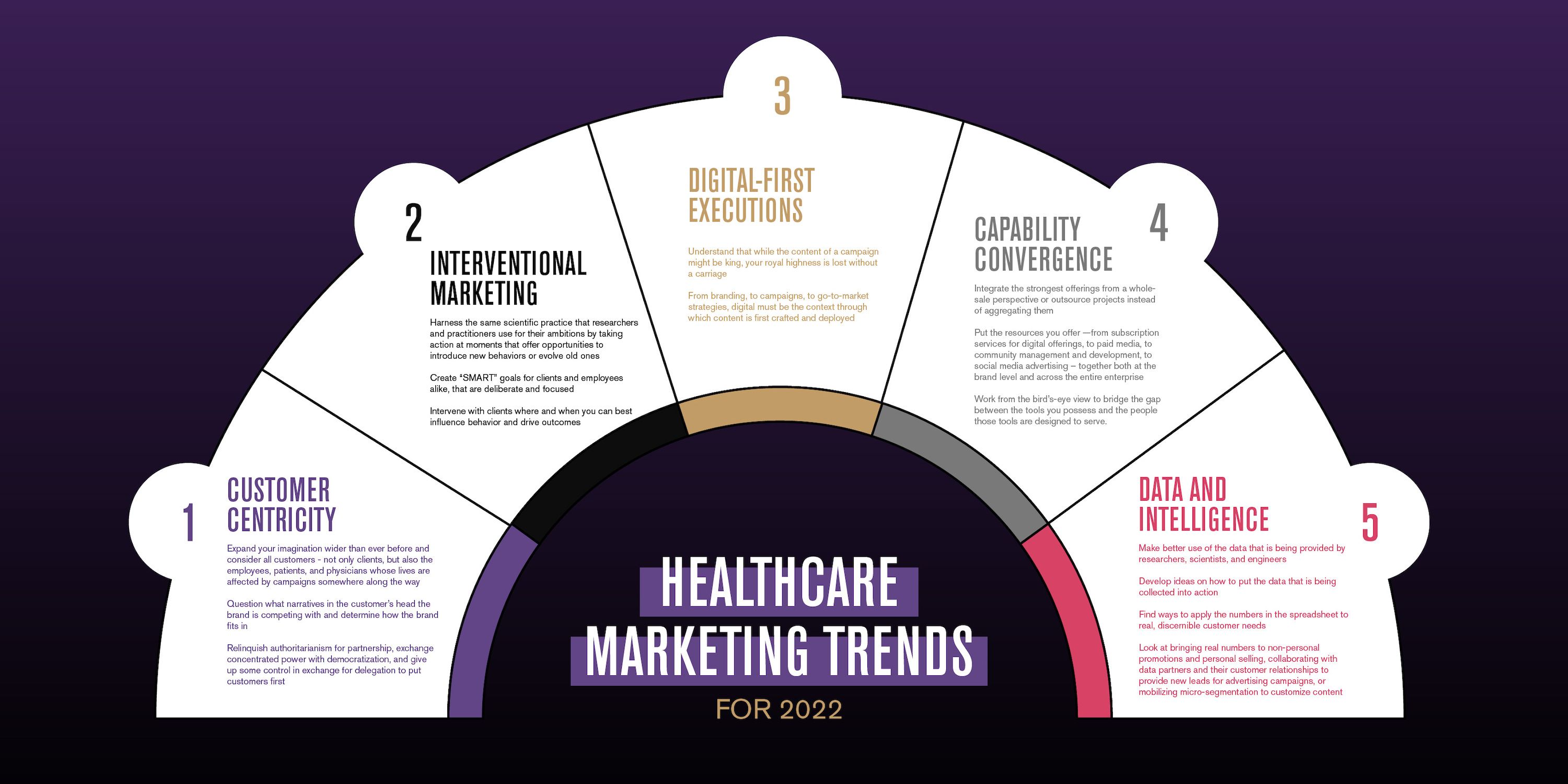The View From the Forefront
Every year, advertising agencies set out to predict what will be popular in the year ahead. And each year—as we’ve learned with an already fraught start to 2022—comes with surprises. We can never be certain what the year will hold, but when you stand at the forefront of healthcare marketing, the view becomes a little clearer. Trends take shape, innovations evolve before our eyes, and ideas unfold, converging to create seismic shifts in the marketing topography. We’re here now, staring down the year, and we have a few ideas about what you can expect from our industry over the next twelve months.
Matthew Howes, President at Greater Than One

- Customer-centricity. This goes far beyond the trope, “the customer is always right.” Marketers are expanding their imaginations wider than they ever have before, considering their customers not only their clients, but also the employees, patients, and physicians whose lives are affected by campaigns somewhere along the way. From there, the question becomes not, “what is my brand story?” but “what narratives in my customer’s head am I competing with and how does my brand fit in?” Marketers should be inclined to relinquish authoritarianism for partnership, exchange concentrated power with democratization, and give up some control in exchange for delegation. If they don’t, they will be left behind the brands that have chosen to put their customers first.
- Interventional marketing is a phrase that might sound a little scary. “Interventional” is a word we’re used to hearing in doctor’s offices, not boardrooms. But marketers can harness the same scientific practice that researchers and practitioners use for their ambitions by taking action at moments that offer opportunities to introduce new behaviors or evolve old ones. When implementing this strategy, nothing is replaced, but everything is refined. What does this mean exactly? Let’s take an example as simple as “SMART” goals. These goals, used for clients and employees alike, are deliberate and focused. Step-by-step goals will always be more effective than broad aspirations, because they allow you to make little changes, one by one, that add up to something more ambitious. Marketers who are in touch with their customers will use this line of thinking to intervene where and when they can best influence behavior and drive outcomes.
- Digital-first executions are going to be one of the big ways healthcare marketers deploy their tailormade excavations this year. Technology and the experiences it enables are dominating our world. As of this time last year, 70% of Americans were using social media, according to Pew Research Center1. The majority of these users visited these sites daily, offering a clear point of entry for marketers to meet customers where they already are. The content of a campaign might be king, but your royal highness is lost without a carriage. From branding, to campaigns, to go-to-market strategies, digital must be the context through which content is first crafted and deployed.
- Capability convergence is what happens when marketers aggregate their strongest offerings for a common purpose, rather than integrating from a wholesale perspective or outsourcing their projects. Agencies have a lot to offer on their own—from subscription services for digital offerings, to paid media, to community management and development, to social media advertising. When marketers put their resources together, they can thrive not only at the brand level, but also across an entire enterprise. With enterprise level technology architecture, for example, customers can make the most of the data and digital tools they’re offered. Working from the bird’s-eye view allows agencies to bridge the gap between the tools they possess and the people those tools are designed to serve.
- Data and intelligence are the currency for marketing and advertising agencies. As researchers, scientists, and engineers develop infinite ways for companies to collect data—from artificial intelligence, to the Internet of things, to web32—agencies will need ideas about how to put them into action. According to Harvard Business Review, companies across industries are underutilizing the data they capture3, whether or not they understand the importance of having such data. There are so many ways healthcare marketing agencies can make better use of this kind of intelligence. For example, by bringing real numbers to non-personal promotions and personal selling, collaborating with data partners and their customer relationships to provide new leads for advertising campaigns, and mobilizing micro segmentation to customize content. You can get data for nearly anything but what can you get from the data? The real challenge is finding ways to apply the numbers in the spreadsheet to real, discernible customer needs.
Matthew Howes is President at Greater Than One.
Click to enlarge

1 https://www.pewresearch.org/internet/2021/04/07/social-media-use-in-2021/
2 https://www.wired.com/story/web3-gavin-wood-interview/
3 https://hbr.org/2020/02/are-you-using-your-data-or-just-collecting-it
The Misinformation Maze: Navigating Public Health in the Digital Age
March 11th 2025Jennifer Butler, chief commercial officer of Pleio, discusses misinformation's threat to public health, where patients are turning for trustworthy health information, the industry's pivot to peer-to-patient strategies to educate patients, and more.
Navigating Distrust: Pharma in the Age of Social Media
February 18th 2025Ian Baer, Founder and CEO of Sooth, discusses how the growing distrust in social media will impact industry marketing strategies and the relationships between pharmaceutical companies and the patients they aim to serve. He also explains dark social, how to combat misinformation, closing the trust gap, and more.